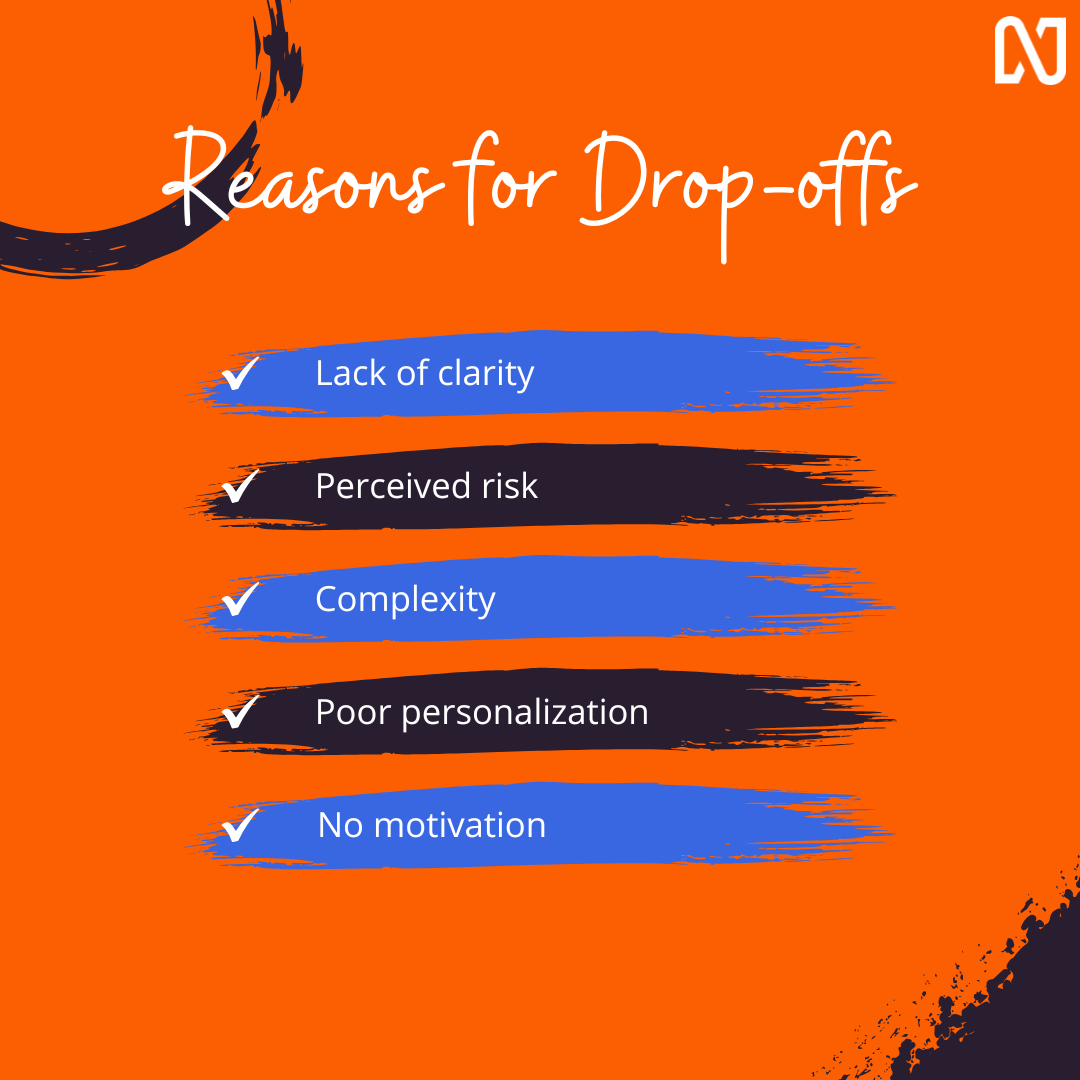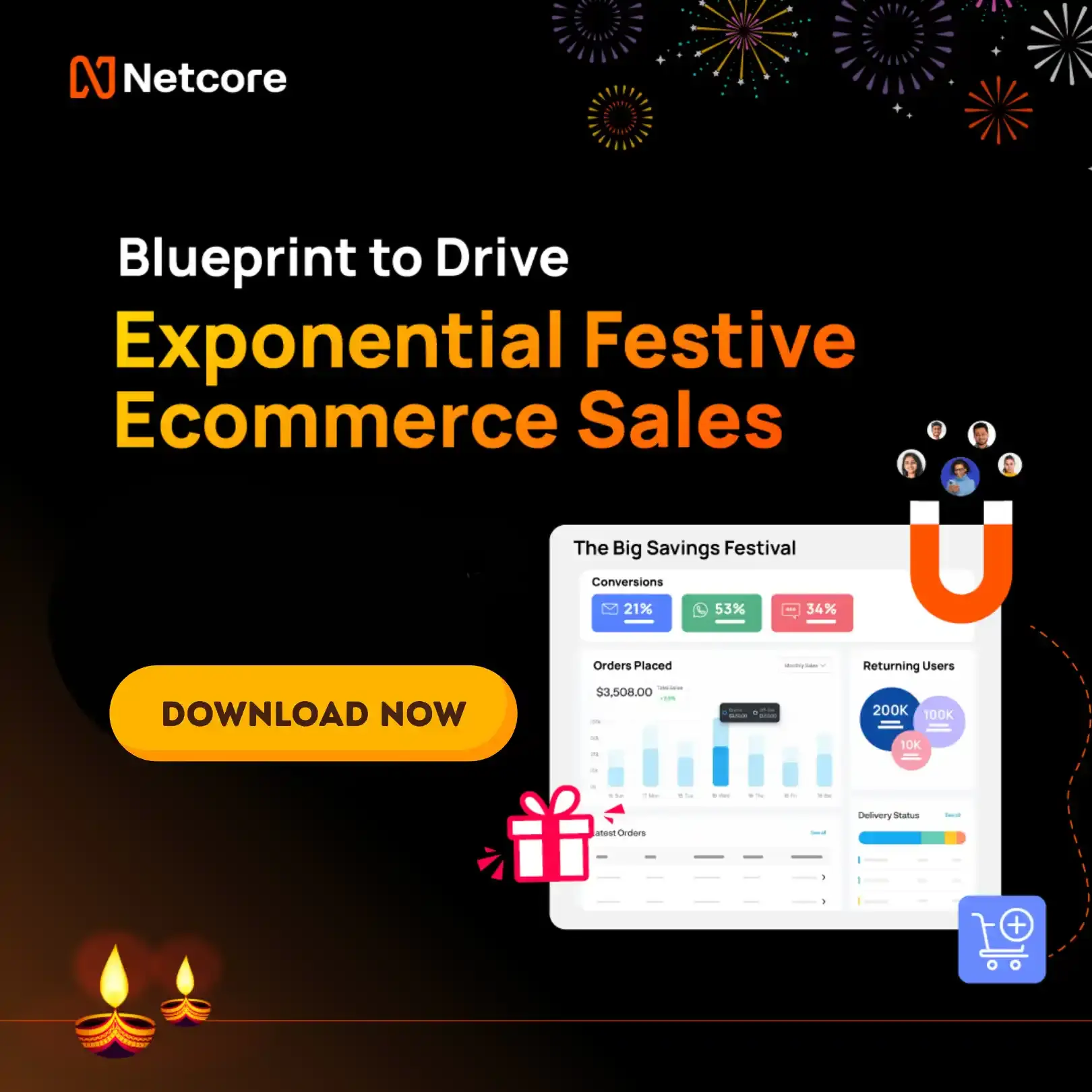Getting users to download your fintech app is only half the battle. The real challenge is getting them to complete their first transaction. Many apps see a significant drop-off in this area despite having invested heavily in acquisition and onboarding.
In fact, as per research, global transactions via digital wallets amounted to $13.9 trillion, accounting for 50% of all online purchases and 30% of POS transactions. The volumes are only expected to rise further as digital transactions become the norm.
In this blog, let’s explore how you can improve first transaction rates and how Netcore Cloud empowers your brand to move the needle on first transaction rates (FTR).
Understanding the First Transaction Drop-Off
Users often churn between onboarding and transacting due to a combination of the following:

- Lack of clarity: Unclear steps to transact post-KYC.
- Perceived risk: Concerns over security or legitimacy.
- Complexity: A clunky UX or excessive friction.
- Poor personalization: Irrelevant or non-contextual nudges.
- No motivation: Lack of incentives or clear value proposition.
Fintech apps must blend behavioral insights with real-time engagement tactics to bridge this gap.
Strategies to Improve First Transaction Rates
a. Personalized Onboarding Journeys
Onboarding is the first impression your app makes after a user signs up. A one-size-fits-all flow can confuse users or steer them away from their original intent.
How to do it:
- Dynamic Flow Routing: Based on acquisition source (Google Ads, referrals, organic), user demographics, or initial in-app behavior, direct users through tailored onboarding paths. For instance, a user coming from an ad for investment products shouldn’t be shown loan options upfront.
- Behavioral Checkpoints: Use progressive profiling and in-app surveys to ask the right questions at the right time, like “What are your financial goals?” or “What type of services are you interested in?”—and adapt the journey accordingly.
- Milestone Messaging: Reinforce key steps (e.g., “Great! Your KYC is done. Here’s what’s next.”) to keep users engaged and prevent drop-offs caused by uncertainty or cognitive overload.
b. Gamified Nudges & Micro-Incentives
Gamification taps into human psychology—users respond to rewards, progress bars, and the joy of unlocking achievements.
How to do it:
- Progress Trackers: Visually display onboarding and transaction milestones. Seeing “80% completed” motivates users to take the next step.
- Micro-Rewards: Offer small incentives for key actions like linking a bank account or completing KYC—these can be cashback, coupons, or loyalty points.
- Daily Challenges & Streaks: Encourage habit formation by introducing mini-goals (“Complete your first payment today and earn 50 points!”).
c. Contextual Product Recommendations
Not every user knows what to do next. Intelligent suggestions remove decision fatigue and improve the odds of a transaction.
How to do it:
- Intent Mapping: Use ML models to detect what users are looking for (e.g., “user clicked on loan calculator multiple times”) and recommend the next best action.
- Product Tiles on Home Screens: If the user searches for EMI calculators, populate the homepage with contextually relevant services, like a personalized credit card recommendation.
- Email/SMS/App Recommendations: Trigger push notifications or emails with tailored offers (e.g., “Based on your profile, you’re eligible for ₹50,000 instant credit”).
d. Simplified KYC & UI/UX Experience
KYC processes are often tedious, leading to high abandonment rates. A clunky or confusing interface makes it worse.
How to do it:
- Smart KYC Integration: Use OCR tech, video KYC, or biometric verification to accelerate the process.
- Auto-Fill and Scan Features: Help users upload PAN cards or IDs with a single tap via camera capture and auto-input.
- Feedback Loops: Provide real-time validation and success states (like green ticks or progress messages) as users complete forms.
- Minimalist UI: Strip away unnecessary clicks. Make CTAs obvious. Avoid overwhelming first-time users with complex navigation.
e. Real-Time Customer Support Integration
First-time users often have questions or concerns. Without quick answers, they’re likely to abandon the process entirely.
How to do it:
- Embedded Chatbots: Integrate AI chat support into the onboarding and transaction flow for instant help.
- Live Agent Handoff: Seamlessly route complex queries to a human agent with chat history intact.
- Transactional Help Guides: Offer real-time support prompts like “Need help transferring funds?” or “Why is KYC required?” embedded contextually in-app.
- Multilingual Support: Ensure assistance is offered in users’ native languages—especially important in tier-2/3 markets.
How Netcore Cloud Helps Fintech Apps Improve First Transaction Rates — Powered by Agentic AI
Netcore Cloud has evolved beyond traditional marketing automation into a futuristic, AI-powered agentic architecture. The platform’s Agentic AI model consists of autonomous yet coordinated intelligent agents—Segment Agent, Content Agent, Insights Agent, and Shopping Agent—that collectively work to accelerate critical customer actions such as the first transaction.

Let’s break down how these agents specifically drive first transaction rates (FTR).
1. Journey Orchestration with Multi-Agent Intelligence
Netcore’s multi-agent AI framework brings hyper-personalized orchestration to life.
How It Works:
- The Segment Agent identifies drop-off segments post-onboarding, such as users who have verified KYC but haven’t added funds.
- The Content Agent automatically crafts hyper-personalized messages for each user type.
- The Journey Builder uses these agents’ outputs to trigger contextual flows—nudges, walk-throughs, emails, and WhatsApp messages.
2. Segment Agent: Precision Targeting for Contextual Activation
The Segment Agent continuously builds evolving, micro-targeted customer segments using:
- Behavioral patterns (e.g., “Browsed loan products twice, didn’t apply”)
- Propensity scoring (e.g., likelihood to complete first transaction)
- Affinity detection (e.g., strong interest in “quick credit,” not “mutual funds”)
Use Case Example:
Segment Agent identifies users showing high interest in micro-loans but with low transaction rates. By layering segment insights with intent signals, you can deploy targeted WhatsApp message:
“Still thinking about your ₹25,000 loan? Get instant approval in 1 step!”
3. Content Agent: Generating Conversion-Ready Messaging at Scale
The Content Agent leverages generative AI to auto-create:
- Create conversion-driven copy
- In-app/inbox messaging for different user personas
- Campaigns optimized for tone, urgency, and action
Use Case Example:
Create different messaging for three cohorts: new users, passive KYC-completers, and failed transaction abandoners. The Content Agent auto-generated copy campaigns with customized CTAs:
- “Start building wealth today – set up your first SIP in 2 minutes”
- “Let us help you complete your journey — tap to retry your payment securely”
5. Insights Agent: Diagnosing Drop-Offs, Predicting Actions
The Insights Agent acts like a real-time growth analyst embedded into the stack. It:
- Surfaces drop-off funnels post-onboarding
- Correlates behavioral trends with action gaps
- Recommends fixes & next best action for your campaigns
Conclusion
Improving the first transaction rate is not just a product goal—it’s a growth imperative. Fintech users are fickle, and the cost of losing them post-onboarding is high.
Netcore doesn’t just provide AI tools—it co-owns your KPIs. Whether you’re targeting first transactions, LTV, or app stickiness, the platform is built to deliver outcomes, not just automations.
With Agentic AI, you’re no longer guessing. You’re guiding with intelligence, speed, and precision.
Frequently Asked Questions
1. Why is the first transaction rate so important for fintech apps?
The first transaction rate (FTR) is a critical metric because it indicates the successful conversion of a user from interest to action. In fintech, this could mean a user adding money, making a payment, applying for a loan, or investing. A higher FTR leads to better user retention, stronger LTV, and validates onboarding efficiency. If users don’t transact early, they’re far more likely to churn.
2. What causes users to drop off after onboarding is complete?
Common causes include:
- Unclear next steps post-KYC
- Concerns around security or data sharing
- Complex or broken UX flows
- Lack of personalized guidance
- No immediate reward or value proposition
Addressing these friction points is essential to improving FTR.
3. How can personalization help drive first transactions?
Personalization ensures that users see only relevant prompts, offers, and product suggestions based on their behavior and intent. Tools like Netcore’s Segment Agent and Content Agent dynamically adjust onboarding journeys and CTAs to resonate with individual users, increasing the likelihood of early engagement and first-time action.
4. How does Netcore’s Agentic AI model support fintech onboarding and transactions?
Netcore’s Agentic AI framework uses autonomous agents to:
- Segment users by behavior and intent
- Generate contextual messages and nudges
- Recommend the next-best action or product
- Diagnose drop-offs and suggest funnel improvements
This coordinated intelligence shortens time-to-transaction and drives measurable uplifts in FTR.
5. Can WhatsApp and mobile messaging channels help improve FTR?
Absolutely. Fintech users prefer real-time, mobile-first engagement. Netcore enables personalized WhatsApp flows, push notifications, and SMS nudges triggered at key behavioral milestones—like post-KYC, post-login, or post-fund addition. This immediacy and relevance boost conversion significantly.
 Festive season = growth season
Festive season = growth season  Unlock the ecommerce growth tactics from India’s top ecommerce brands.
Unlock the ecommerce growth tactics from India’s top ecommerce brands.








